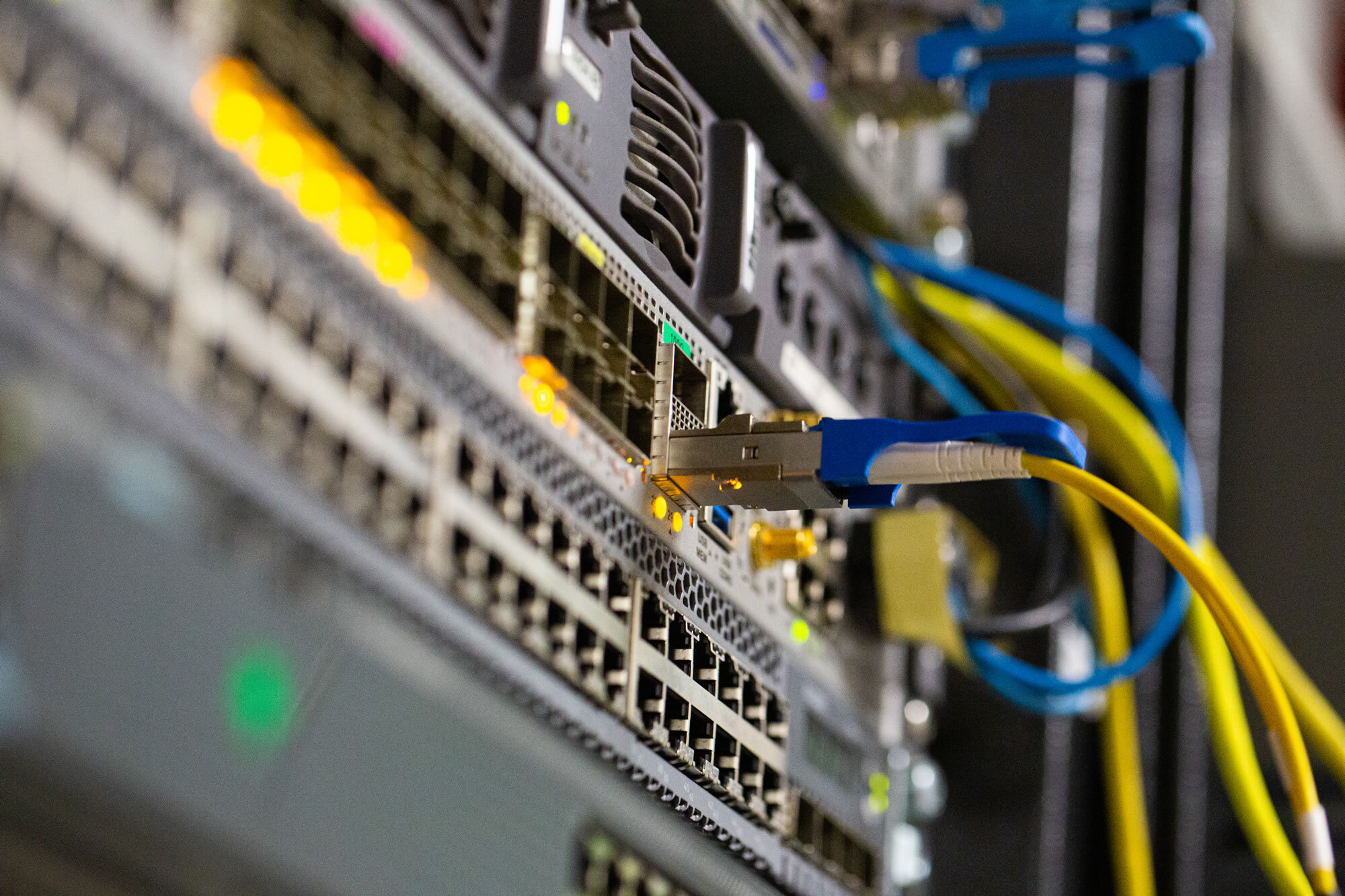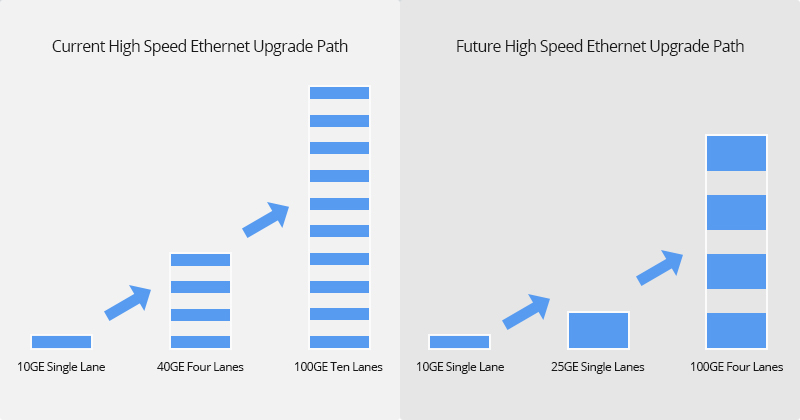
The increasing demand for high-speed networks and faster, efficient data transfer has led to the continuous development of networking standards. So, as businesses grow and data requirements skyrocket, upgrading network infrastructure becomes essential. One such progression in network migration involves transitioning from 10 Gigabit per second (10G) to 25G, 40G, and ultimately to 100G network speeds. This proves that high-speed networks are the future of networking and data center management. This article explores the rationale behind this migration to 100G, the benefits it offers, and the challenges organizations may face in the process.
What's Driving the Migration to 100G Network Connectivity?
The digital era has ushered in a data-centric paradigm where speed is of the essence. As a result, organizations are moving away from traditional 10G networks in favor of higher speeds like 100G networks to accommodate the increasing demand for bandwidth. Why this migration?
The key reasons propelling the migration towards higher bandwidth networks include:
#1. Exponential Data Growth
Cloud computing, video streaming, and the Internet of Things (IoT) are generating data at an unprecedented rate. Traditional 10G networks are becoming bottlenecks, hindering performance and agility. Users are increasingly showing a preference for high-speed networks to support their data transfer demands.
#2. Emerging Technologies
Artificial intelligence, machine learning, and virtual reality rely on high-bandwidth connectivity. 10G networks simply cannot sustainably/substantially support the real-time data demands of these cutting-edge applications compared to higher network speeds like 100G networks.
#3. Increased Efficiency
Upgrading to 100G networks not only boosts bandwidth but also enhances operation efficiency. Fewer cables and switches are needed, reducing physical space requirements and overall power consumption.
Charting the Course: From 10G to 25G to 40G to 100G
1. Migration from 10G to 25G
The transition from 10G to 25G represents a significant boost in network speed, providing a cost-effective way to enhance bandwidth without a complete overhaul of existing infrastructure. Organizations can leverage 25G Ethernet to meet growing data requirements, improve server-to-switch connections, and optimize performance in high-density environments.
2. Advancing to 40G
As data requirements continue to surge, the migration from 25G to 40G becomes a logical progression. 40G Ethernet offers increased throughput, reducing bottlenecks and supporting the data-intensive applications that modern businesses rely on. This transition is particularly crucial for data centers and enterprises dealing with massive amounts of traffic.
3. The Quest for 100G
The pinnacle of this network evolution is the migration to 100G. The demand for higher speeds is driven by the exponential growth of data and bandwidth requirements. Thus,100G Ethernet emerges as a solution to meet the needs of large-scale data centers, service providers, and enterprises with exceptionally high bandwidth requirements. The move to 100G is often accompanied by advancements in optics and cabling technology.
Unlocking the Benefits: Why Migrate to 100G?
As digital transformation accelerates and data volumes continue to skyrocket, the demand for faster transmission speeds has reached unprecedented levels and thus driving the migration to 100G speeds. Below are some compelling reasons why migrating to 100G has become a strategic imperative for enterprises looking to stay competitive and future-proof their networks.
1. Increased Bandwidth
Each step in the network migration process brings a substantial increase in bandwidth, allowing organizations to handle higher volumes of data and support more users and applications. 100G provides the highest level of this advantage.
2. Reduced Latency
Higher network speeds contribute to lower latency, improving the overall responsiveness of applications and services. This is particularly critical for IoT and real-time applications like video conferencing and online gaming.
3. Enhanced Scalability
The ability to scale network infrastructure easily is crucial for growing businesses. The migration to higher network speeds like 100G facilitates scalability, ensuring that networks can adapt to evolving demands seamlessly.
4. Improved Efficiency
Higher-speed networks optimize data transfer, resulting in more efficient utilization of resources. This efficiency is essential for key enterprise or business IT tasks such as data backups, virtualization, and storage solutions.
5. Future-Proofing your network
Migrating to 100G network speeds positions your network for the demands of emerging technologies and staying ahead of the curve in the ever-evolving digital landscape.
Challenges in Network Migration to 100G
While migration to a 100G high-speed network is packed with many benefits, it comes with some challenges which include:
1. Cost Considerations
The upfront costs associated with upgrading network infrastructure to support 100G speeds can be a significant hurdle for organizations. However, the long-term benefits in terms of performance and scalability often outweigh the initial investment.
2. Compatibility and Interoperability
Ensuring compatibility between new and existing equipment is crucial during the migration process. Organizations must carefully plan and execute the transition to avoid disruptions and downtime.
3. Skill and Expertise
Implementing higher-speed networks may require specialized knowledge and expertise. Organizations should invest in training their IT personnel or consider partnering with experienced professionals to navigate the network migration successfully.
The Road Ahead: Embracing the Journey to 100G
The journey from 10G to 25G to 40G to 100G represents a natural evolution in network technology, driven by the insatiable appetite for faster and more efficient data transfer. While challenges may arise during the high-speed network migration process, the benefits of increased bandwidth, reduced latency, scalability, and improved efficiency make the transition worthwhile. As organizations continue to adapt to the demands of the digital age, staying at the forefront of network technology is not just an option but a strategic necessity. Optace Networks is your strategic partner to align your network systems with the growing demands for connectivity.
Want 100G products and solutions? Contact us to learn more about our 100G products and solutions.
Latest Articles
Tue Dec 09 2025
Why MikroTik Should Be in Your 2026 Network PlanMon Oct 13 2025
Netgate pfSense+ Security Gateways: The Security Gateway Built for the Demands of Modern EducationWed Sep 03 2025
hello worldRelated Articles

100G Network Migration: An Inevitable Roadmap for Future Data Centers

© 2025 PoweredbyOptace Networks Limited. All Rights Reserved.

